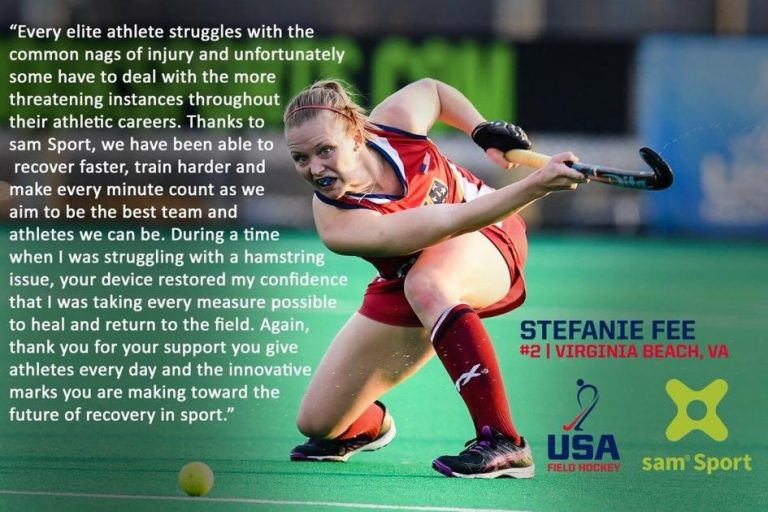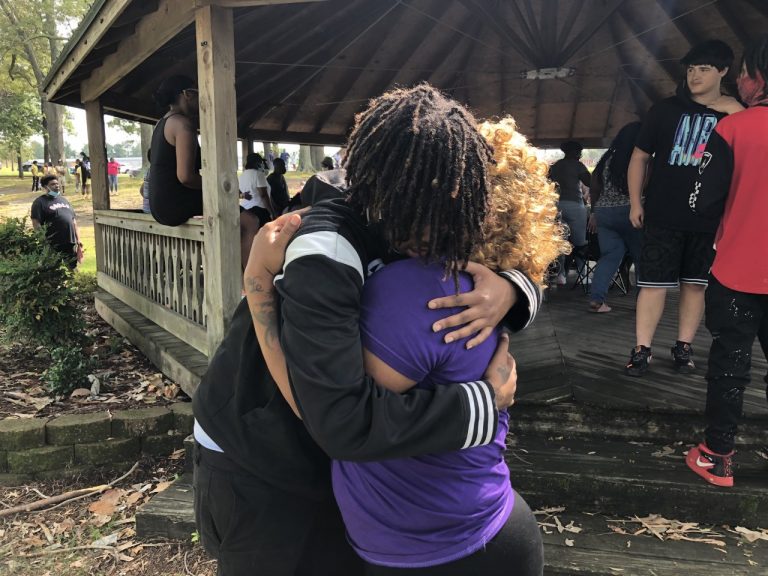Aug. 3, 2021 05:00 UTC
SOUTH SAN FRANCISCO, Calif.–(BUSINESS WIRE)– Genentech, a member of the Roche Group (SIX: RO, ROG; OTCQX: RHHBY), today announced that the U.S. Food and Drug Administration (FDA) has accepted the company’s supplemental Biologics License Application (sBLA) and granted Priority Review for Tecentriq® (atezolizumab) as adjuvant treatment following surgery and platinum-based chemotherapy for people with non-small cell lung cancer (NSCLC) whose tumors express PD-L1≥1%, as determined by an FDA-approved test. The FDA is reviewing the application under the Real-Time Oncology Review pilot program, which aims to explore a more efficient review process to ensure safe and effective treatments are available to patients as early as possible. The FDA is expected to make a decision on approval by December 1, 2021.
“New treatment options are urgently needed in early-stage non-small cell lung cancer to help the nearly 50% of people who currently experience a recurrence following surgery,” said Levi Garraway, M.D., Ph.D., chief medical officer and head of Global Product Development. “Tecentriq is the first cancer immunotherapy to show a clinically meaningful benefit in the adjuvant lung cancer setting, and we’re working closely with the FDA to bring this significant advancement to patients as quickly as possible.”
This application is based on disease-free survival (DFS) results from an interim analysis of the Phase III IMpower010 study, the first and only Phase III study of a cancer immunotherapy to demonstrate positive results in the adjuvant lung cancer setting. The study showed that treatment with Tecentriq following surgery and platinum-based chemotherapy reduced the risk of disease recurrence or death (DFS) by 34% (hazard ratio [HR]=0.66, 95% CI: 0.50-0.88) in people with Stage II-IIIA NSCLC whose tumors express PD-L1≥1%, compared with best supportive care (BSC). In this population, median DFS was not yet reached for Tecentriq compared with 35.3 months for BSC. Follow-up on the IMpower010 trial will continue with planned analyses of DFS in the overall intent-to-treat (ITT) population, including Stage IB patients, which at the time of analysis did not cross the threshold, and overall survival (OS) data, which were immature at the time of interim analysis. Safety data for Tecentriq were consistent with its known safety profile and no new safety signals were identified. Results from the IMpower010 trial were presented at the 2021 ASCO Annual Meeting.
About the IMpower010 study
IMpower010 is a Phase III, global, multicenter, open-label, randomized study evaluating the efficacy and safety of Tecentriq compared with BSC, in participants with Stage IB-IIIA NSCLC (UICC 7th edition), following surgical resection and up to 4 cycles of adjuvant cisplatin-based chemotherapy. The study randomized 1,005 people with a ratio of 1:1 to receive either Tecentriq (up to 16 cycles) or BSC. The primary endpoint is investigator-determined DFS in the PD-L1-positive Stage II-IIIA, all randomized Stage II-IIIA and ITT Stage IB-IIIA populations. Key secondary endpoints include OS in the overall study population, ITT Stage IB-IIIA NSCLC.
About lung cancer
According to the American Cancer Society, it is estimated that more than 235,000 Americans will be diagnosed with lung cancer in 2021, and NSCLC accounts for 80-85% of all lung cancers. Today, about half of all people with early lung cancer still experience a cancer recurrence following surgery, but treating lung cancer early, before it has spread, may help prevent the disease from returning and provide people with the best opportunity for a cure.
About Tecentriq® (atezolizumab)
Tecentriq is a monoclonal antibody designed to bind with a protein called PD-L1. Tecentriq is designed to bind to PD-L1 expressed on tumor cells and tumor-infiltrating immune cells, blocking its interactions with both PD-1 and B7.1 receptors. By inhibiting PD-L1, Tecentriq may enable the re-activation of T cells. Tecentriq may also affect normal cells.
Tecentriq U.S. Indications
Tecentriq is a prescription medicine used to treat adults with:
A type of lung cancer called non-small cell lung cancer (NSCLC).
- Tecentriq may be used alone as their first treatment when their lung cancer:
- has spread or grown, and
- their cancer tests positive for “high PD-L1”, and
- their tumor does not have an abnormal “EGFR” or “ALK” gene
- Tecentriq may be used with the medicines bevacizumab, paclitaxel, and carboplatin as their first treatment when their lung cancer:
- has spread or grown, and
- is a type called “non-squamous NSCLC,” and
- their tumor does not have an abnormal “EGFR” or “ALK” gene
- Tecentriq may be used with the medicines paclitaxel protein-bound and carboplatin as their first treatment when their lung cancer:
- has spread or grown, and
- is a type called “non-squamous NSCLC,” and
- their tumor does not have an abnormal “EGFR” or “ALK” gene
- Tecentriq may also be used when their lung cancer:
- has spread or grown, and
- they have tried chemotherapy that contains platinum, and it did not work or is no longer working
- if their tumor has an abnormal “EGFR” or “ALK” gene, they should have also tried an FDA-approved therapy for tumors with these abnormal genes, and it did not work or is no longer working
A type of lung cancer called small cell lung cancer (SCLC).
- Tecentriq may be used with the chemotherapy medicines carboplatin and etoposide as their first treatment when their lung cancer:
- is a type called “extensive-stage small cell lung cancer,” which means that it has spread or grown
It is not known if Tecentriq is safe and effective in children.
Important Safety Information
What is the most important information about Tecentriq?
Tecentriq can cause the immune system to attack normal organs and tissues in any area of the body and can affect the way they work. These problems can sometimes become severe or life threatening and can lead to death. Patients can have more than one of these problems at the same time. These problems may happen anytime during their treatment or even after their treatment has ended.
Patients should call or see their healthcare provider right away if they develop any new or worse signs or symptoms, including:
Lung problems
- cough
- shortness of breath
- chest pain
Intestinal problems
- diarrhea (loose stools) or more frequent bowel movements than usual
- stools that are black, tarry, sticky, or have blood or mucus
- severe stomach-area (abdomen) pain or tenderness
Liver problems
- yellowing of the skin or the whites of the eyes
- severe nausea or vomiting
- pain on the right side of their stomach area (abdomen)
- dark urine (tea colored)
- bleeding or bruising more easily than normal
Hormone gland problems
- headaches that will not go away or unusual headaches
- eye sensitivity to light
- eye problems
- rapid heartbeat
- increased sweating
- extreme tiredness
- weight gain or weight loss
- feeling more hungry or thirsty than usual
- urinating more often than usual
- hair loss
- feeling cold
- constipation
- their voice gets deeper
- dizziness or fainting
- changes in mood or behavior, such as decreased sex drive, irritability, or forgetfulness
Kidney problems
- decrease in their amount of urine
- blood in their urine
- swelling of their ankles
- loss of appetite
Skin problems
- rash
- itching
- skin blistering or peeling
- painful sores or ulcers in mouth or nose, throat, or genital area
- fever or flu-like symptoms
- swollen lymph nodes
Problems can also happen in other organs.
These are not all of the signs and symptoms of immune system problems that can happen with Tecentriq. Patients should call or see their healthcare provider right away for any new or worse signs or symptoms, including:
- Chest pain, irregular heartbeat, shortness of breath, or swelling of ankles
- Confusion, sleepiness, memory problems, changes in mood or behavior, stiff neck, balance problems, tingling or numbness of the arms or legs
- Double vision, blurry vision, sensitivity to light, eye pain, changes in eyesight
- Persistent or severe muscle pain or weakness, muscle cramps
- Low red blood cells, bruising
Infusion reactions that can sometimes be severe or life-threatening. Signs and symptoms of infusion reactions may include:
- chills or shaking
- itching or rash
- flushing
- shortness of breath or wheezing
- dizziness
- feeling like passing out
- fever
- back or neck pain
Complications, including graft-versus-host disease (GVHD), in people who have received a bone marrow (stem cell) transplant that uses donor stem cells (allogeneic). These complications can be serious and can lead to death. These complications may happen if patients undergo transplantation either before or after being treated with Tecentriq. A healthcare provider will monitor for these complications.
Getting medical treatment right away may help keep these problems from becoming more serious. A healthcare provider will check patients for these problems during their treatment with Tecentriq. A healthcare provider may treat patients with corticosteroid or hormone replacement medicines. A healthcare provider may also need to delay or completely stop treatment with Tecentriq if patients have severe side effects.
Before receiving Tecentriq, patients should tell their healthcare provider about all of their medical conditions, including if they:
- have immune system problems such as Crohn’s disease, ulcerative colitis, or lupus
- have received an organ transplant
- have received or plan to receive a stem cell transplant that uses donor stem cells (allogeneic)
- have received radiation treatment to their chest area
- have a condition that affects their nervous system, such as myasthenia gravis or Guillain-Barré syndrome
- are pregnant or plan to become pregnant. Tecentriq can harm an unborn baby. Patients should tell their healthcare provider right away if they become pregnant or think they may be pregnant during treatment with Tecentriq. Females who are able to become pregnant:
- A healthcare provider should do a pregnancy test before they start treatment with Tecentriq
- They should use an effective method of birth control during their treatment and for at least 5 months after the last dose of Tecentriq
- are breastfeeding or plan to breastfeed. It is not known if Tecentriq passes into the breast milk. Patients should not breastfeed during treatment and for at least 5 months after the last dose of Tecentriq
Patients should tell their healthcare provider about all the medicines they take, including prescription and over-the-counter medicines, vitamins, and herbal supplements.
The most common side effects of Tecentriq when used alone include:
- feeling tired or weak
- nausea
- cough
- shortness of breath
- decreased appetite
The most common side effects of Tecentriq when used in lung cancer with other anti-cancer medicines include:
- feeling tired or weak
- nausea
- hair loss
- constipation
- diarrhea
- decreased appetite
Tecentriq may cause fertility problems in females, which may affect the ability to have children. Patients should talk to their healthcare provider if they have concerns about fertility.
These are not all the possible side effects of Tecentriq. Patients should ask their healthcare provider or pharmacist for more information about the benefits and side effects of Tecentriq.
Report side effects to the FDA at 1-800-FDA-1088 or http://www.fda.gov/medwatch.
Report side effects to Genentech at 1-888-835-2555.
Please see http://www.Tecentriq.com for full Prescribing Information and additional Important Safety Information.
About Genentech in cancer immunotherapy
Genentech has been developing medicines to redefine treatment in oncology for more than 35 years, and today, realizing the full potential of cancer immunotherapy is a major area of focus. With more than 20 immunotherapy molecules in development, Genentech is investigating the potential benefits of immunotherapy alone, and in combination with various chemotherapies, targeted therapies and other immunotherapies with the goal of providing each person with a treatment tailored to harness their own unique immune system.
In addition to Genentech’s approved PD-L1 checkpoint inhibitor, the company’s broad cancer immunotherapy pipeline includes other checkpoint inhibitors, individualized neoantigen therapies and T cell bispecific antibodies. For more information visit http://www.gene.com/cancer-immunotherapy.
About Genentech in lung cancer
Lung cancer is a major area of focus and investment for Genentech, and we are committed to developing new approaches, medicines and tests that can help people with this deadly disease. Our goal is to provide an effective treatment option for every person diagnosed with lung cancer. We currently have five approved medicines to treat certain kinds of lung cancer and more than 10 medicines being developed to target the most common genetic drivers of lung cancer or to boost the immune system to combat the disease.
About Genentech
Founded more than 40 years ago, Genentech is a leading biotechnology company that discovers, develops, manufactures and commercializes medicines to treat patients with serious and life-threatening medical conditions. The company, a member of the Roche Group, has headquarters in South San Francisco, California. For additional information about the company, please visit http://www.gene.com.

View source version on businesswire.com: https://www.businesswire.com/news/home/20210802005854/en/




 Layla Howard, 16, (far right) died in a fatal accident in Nottoway County. (Courtesy photo of Latayia Hill)
Layla Howard, 16, (far right) died in a fatal accident in Nottoway County. (Courtesy photo of Latayia Hill)

 Workers will unload their computers and keyboards from the truck during the collection campaign for dangerous households and electronic waste at the Metrolink Via Princessa train station in Santa Clarita on Saturday 7:31:12 am. DanWatson / The Signal
Workers will unload their computers and keyboards from the truck during the collection campaign for dangerous households and electronic waste at the Metrolink Via Princessa train station in Santa Clarita on Saturday 7:31:12 am. DanWatson / The Signal 


